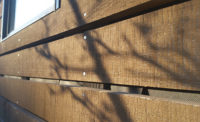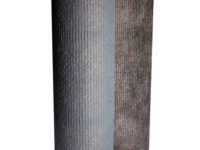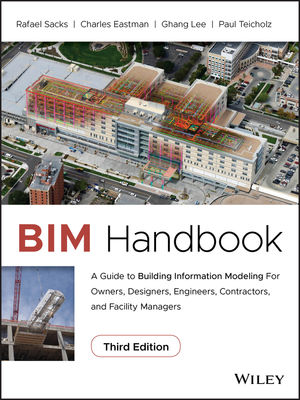How Much Rain Does a Rainscreen Screen? (Part 2)






Click here to read part 1: How Much Rain does a Rainscreen Screen?
In 2005 and 2009, respectively, the American Aluminum Manufacturer’s Association published test standards AAMA 508 and AAMA 509 for use in determining the performance of cladding systems designed to the rainscreen principle. Without laboratory testing to one of these standards, design professionals and owners are left to rely upon best guesses as to how each will actually perform. Cladding manufacturers and fabricators are beginning to test their systems to these standards, and requirements for this testing are beginning to find their way into designers’ construction documents as well.
There’s a Test for That
In an attempt to put to rest the misconception among design professionals and manufacturers that open jointed claddings adequately protect buildings from moisture, I enlisted the help of a local cladding fabricator and a local testing facility to test one in accordance with AAMA 509, Test and Classification Method for Drained and Back Ventilated Rainscreen Wall Cladding Systems.
The standard requires an 8-foot by 8-foot mockup with at least one vertical and one horizontal joint. I had the mockup built with two horizontal joints to more closely approximate the overabundance of joints typically designed into these systems. The AAMA 509 test is a dynamic water penetration test, which means that air pressure differential is simulated using a large fan/propeller facing the mockup. A spray rack is mounted between the fan/propeller and the mockup to simulate precipitation. AAMA 509 is not a pass/fail test, it is simply a method to observe and quantify the amount of water that gets past the cladding and is deposited on the air/water barrier as well as how much ventilation is provided. Laboratory results for this test are indicated in a chart showing the amount of ventilation and water collected. The highest performing claddings will show good ventilation and very little water contacting the air/water barrier.
A Ticking Time Bomb
The open joint cladding mock-up used in the 15-minute test period allowed an excessive amount of water through the joints. The small bucket used to collect water that was hitting the air/water barrier also filled quickly—many times—and a rate of water penetration was calculated to determining the total amount. Most cladding systems tested to AAMA 509 do not even fill one bucket.
Because there are so many variations in cladding types, wall assemblies, building configuration and orientation, it is impossible to make a generalization that all open joint cladding systems will leak. There are several factors that influence whether or not an open joint cladding will allow moisture into a building, no matter how much annual precipitation there might be. A few of the most influential are:
Building Height: The higher the building, the greater the pressure difference driving rain into the cladding.
Overhangs: Even small overhangs provide substantial protection against wetting of the cladding; the deeper the overhang or recess, the greater the protection.
Building Orientation: In every geographic region, wind driven precipitation is predominate in a particular direction, the intensity and direction often changing with the season.
Backup Wall Assembly: Stud walls have very little ability to deal with added moisture, whereas mass walls such as concrete and fully grouted masonry can be exposed to moisture without consequence.
Keeping with Tradition
It is safe to say that fully exposed open joint cladding systems subject to the brunt of wind driven precipitation, in all but the driest of climates, will eventually allow moisture into the building.
These systems are already being remediated by envelope consultants retained by owners to correct the problem. Using an open jointed cladding on a building in rainy climates presents greater risk than a more traditional cladding. In a 2011 RCI symposium paper, Design Considerations for Open-Joint Rainscreen Cladding Systems by Stephane Hoffman and Jose Estada, the authors conclude that, “Current building science theory suggests that best practice when designing and constructing a rainscreen assembly is to install a traditional closed-joint system… Until further research and observation are done on a greater sampling of these cladding systems to understand their limitations, it is a good approach to consider designing them to incorporate the same characteristics of the better-understood typical rainscreen.”
The authors also offer that when a “true (non-simulated) open-joint cladding is preferred,” incorporating an additional water shedding membrane to serve as the primary line of defense may result in a system that performs as a tried-and-true rainscreen assembly. There are products on the market available for this purpose, but here again; this material must be implemented in full accordance with the rainscreen principle as the primary line of defense to ensure satisfactory performance.
Looking for a reprint of this article?
From high-res PDFs to custom plaques, order your copy today!











